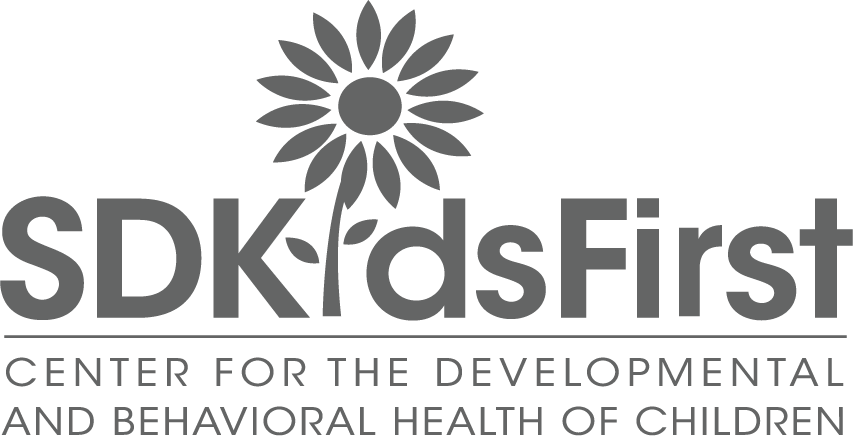As a parent, as well as a professional who works with children, adolescents, and their families, I’d like to acknowledge how long, winding and strange the pandemic road has been for all of us! Nearly all of our normal structures and routines have been abolished or transformed into something different—and often, not for the better. So many familiar, comfortable and helpful fixtures and routines have shifted or vanished, leaving us all in a sustained fog of uncertainty. This sort of thing is tough on a community. On a school. On a family. And without question, such pervasive uncertainty is tough on a child.

Children and adolescents simultaneously wear hats as students, friends, siblings, among other roles. Under the best of circumstances, these roles create competing demands for a child’s attention, time and internal resources. Priorities, coping strategies and the understanding of logical consequences that seem obvious to most adults for managing challenges are far less discernible to a child. Now, consider the additional complexities faced by adolescents, who are beginning to identify as adults, but whose cognitive, social, and emotional development is still years from catching up with that identity. What a confusing jumble of factors! Add in a dollop of pervasive uncertainty, and you’ve got the recipe for …well, for what many parents and academic professionals are seeing with their kids – increased stress, increased anxiety, and a marked effect on mood, emotions, and overall mental health and wellbeing. This can manifest in strained family dynamics /relationships, difficulties with peers, friendships, or difficulties with school performance.
The return to in-person instruction has not been a panacea, for several reasons. First, the “return” represents just another transition to be made, after more than a year of shifting transitions. Second, the schools to which students have returned are not the schools from which they departed. New routines, new processes, new requirements and new expectations are in place. Third, a looming sense that the carpet may yet be pulled out from underneath even this “new normal” lurks in the back of all our minds. Finally, even to the extent that some of the comforting structures and environments of school are now back in place, families and communities are still in flux and dealing with the pandemic in their own ways. And children receive the reverberations from all that ongoing uncertainty. Additionally, families that support students are themselves in need of support, as the cumulative stressors of the pandemic take their inevitable toll.
So, what can we do? How can we best support our children in these challenging times? The good news is that there is a LOT we can do. This time has allowed us opportunities to identify how to best support children ,teens and their families and there are a multitude of services and support options available. These services are aimed at developing our children’s resilience, teaching them new coping strategies and helping them rise from this challenging time renewed, with improved self- awareness, and a refined social/emotional intelligence that will last them a lifetime.
In order to assist parents, on how and when to get look for help, I’ve identified a list of the most common signs and symptoms evidenced by children and teens who are struggling and in need of support. They include:
• Mood Changes
Here, you’re looking for marked shifts in mood that are more prolonged or more intense than previously. Many parents are familiar with the term ‘depression’, and what it looks like for adults, however for children and teens, depressive symptoms can manifest quite differently, and can vary widely between different individuals. Common outward signs of depression in children and teens include different “clusters”, such as sadness, pessimism and hopelessness; irritability and argumentativeness; withdrawal, self-isolation and apathy, or behavioral challenges such as increased rigidity, or low frustration tolerance.. Mood ‘swings’, or or dramatic highs and lows, should also be investigated further.
• Anxiety
As with depression, anxiety symptoms can manifest differently depending on the individual. Some children and adolescents may actually verbalize worrisome thoughts. Others may say nothing, but exhibit avoidance, resistance or excessive procrastination. Other common signs of anxiety are difficulty falling asleep or staying asleep, restlessness, difficulty sustaining attention, and the appearance of distractibility or being “off in their own world.”
•Activity Level Changes
Watch out for shifts towards a lack of motivation, persistent low energy or fatigue, slowness to initiate tasks and/or failure to complete tasks. As with anxiety, activity level changes may also impact wakefulness or sleep patterns. Bear in mind that shifts in activity level can also look like increased agitation, being “on edge” or having difficulty calming down.
• Eating Behaviors
Persistently increased or decreased appetite are potentially important and easy to spot, as are weight gain or weight loss or skipping meals. Eating behavior changes can be accompanied by complaints of symptoms like stomach aches and headaches.
• School Behaviors
Keep your eyes open for decreases in your child’s ability to complete homework, or to complete it at their customary level. Take notice of teachers reporting that your child is more distractible, less focused, or has difficulty completing tasks or engaging in class.
• Social Behaviors
Your child’s behaviors with respect to their friends can offer an important window onto their possible need for support. Withdrawing from friend groups, declining invitations, appearing uninterested in friends, or engaging in protracted self-isolation or solitary activities can all be signs, especially if they represent changes to your child’s typical social behaviors.
• Lack of Taking Pleasure
Be alert to indications that your child or adolescent no longer takes please in previously pleasurable activities. This can include a lack of interest in attending regularly scheduled activities (e.g., dance, gymnastics, and other organized sports) as well as unstructured pastimes (e.g., skateboarding, jam sessions, etc.).
• Higher Risk Behaviors
Any of the following “red flags” are cause for immediate concern and action: cutting behaviors, comments about wanting to die, comments about wanting to hurt others, substance use (even one time!) or other obviously unsafe and reckless behaviors.
If you’ve identified that your child or adolescent is likely struggling, the next steps all begin with conversations. These conversations might be held in parallel, or in sequence, depending on your individual circumstances. And, as with any good conversation, the key is to focus on communicating with clarity and empathy, as opposed to controlling the discussion towards a specific outcome. The first conversations you’ll absolutely want to have are with your child and with your child’s teachers.
Talking with Your Child
•Take into account your child’s or teen’s communication style; adapt, but do not sacrifice clarity.
• Begin by stating what you’ve observed about their recent behaviors or mood, then ask:
“Would you like to talk about it?”
• Offer to help, but refrain from pressuring or aggressively persuading.
• If your child resists talking to you (they might!), offer to pair them up with another family member, a family friend, or a counselor.
Talking with Your Child’s Teachers
• Schedule a time for the conversation. This is not an “in passing” chat.
• Describe what you’ve observed about your child’s recent behaviors or mood.
• Solicit impressions from the teacher(s)
• It’s less important that everyone agrees on root causes; it’s more important that everyone can honestly report their own observations
• Assemble a team to continue to monitor your child. This team acts as your “eyes” when your child is at school.
After speaking with your child and your child’s teachers, you may feel confident that involving a therapist or other mental health professional is the right next step. But it’s also possible that you vacillate over that question. If you’re stuck on this decision, it can be helpful to speak first with your child’s or teen’s pediatrician about your concerns, and to schedule an appointment for the pediatrician to meet with your child. There are several benefits to this approach:
• Your child or adolescent may be more open to meeting first with the pediatrician, who is a “known entity” and who does not explicitly identify as a mental health professional.
• The pediatrician can make a referral, if appropriate, to a therapist or other provider.
• Adolescents in particular may respond better to a referral from a pediatrician than a suggestion from a parent.
• The pediatrician may be able to offer you additional perspective and support on the best next steps.
It’s possible that you already suspect that professional mental health support is the right next step for your child or teen. If so, then it’s time for a conversation with a therapist or counselor.
Talking with a Mental Health Professional
• Make an initial appointment to discuss your concerns. The therapist will help you discern what level of support is appropriate, and whether they are the right fit to provide therapeutic support.
• Even if the therapist advises that formal therapy is not indicated, they will be able to make recommendations useful for helping the situation at home and at school.
• There are more options than “once per week” versus “no therapy”. Many therapists may prescribe “check-in” visits if regular therapy is deemed unnecessary.
• Kids sometimes resist the very notion of therapy. If this is the case in your situation, explore the possibility of “check-in” visits, and emphasize to your child that the visits needn’t be a regular, recurring event.
In summary, there are a few core ideas to remember as you help your child navigate the strange terrain of the pandemic. First, encountering new or unexpected difficulties is natural in this odd, prolonged period of uncertainty. Second, although internal struggles can be elusive, there are many signs and symptoms to look for and many resources within your reach. Finally, every important course of action begins
with open, honest and clear communication—with your child, with their teachers, and with any of myriad mental health professionals whose entire reason for being is to help in times like these.
Deborah Pontillo, Ph.D., is Owner/Founder and Director of San Diego Kids First, a clinic providing mental health, behavioral, and educational services for children and youth, birth -young adulthood. Dr. Pontillo has over 25 years of education, training and experience in
pediatric psychology and is regarded as an expert in the field of child and adolescent development, behavior, and learning. She is also V. Assistant Clinical Professor in the Dept. of Psychiatry, School of Medicine, at UCSD. Feel free to contact San Diego Kids First contact@sdkidsfirst.com or 858-692-4187 or visit www.sdkidsfirst.com to learn more about the many ways San Diego Kids First can support your child or teen.
